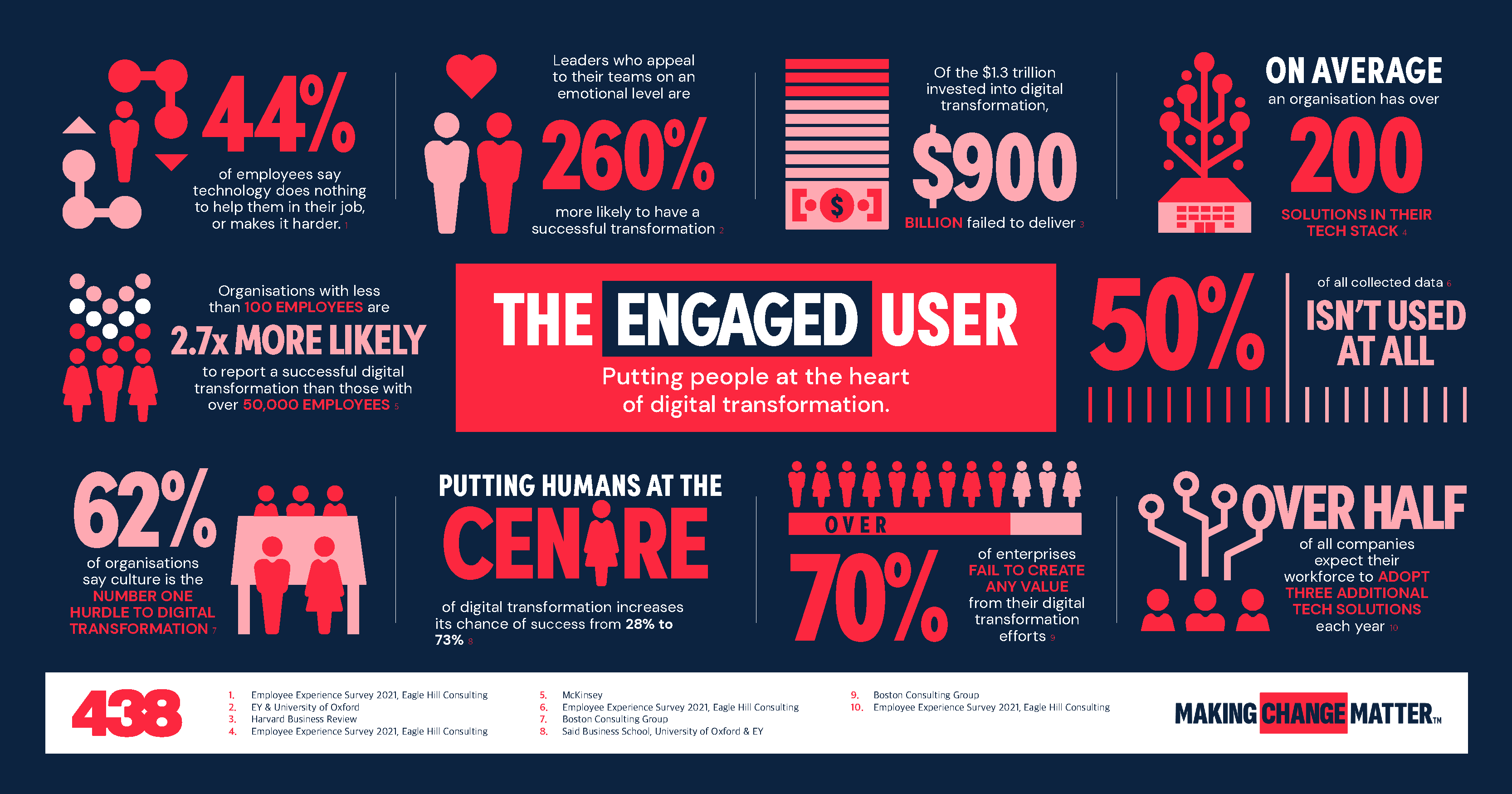According to Edelman’s ‘Trust barometer’, an extensive survey of 36,000 people across 28 countries, some 60 percent of us now choose our place of work not just on salary, health insurance, or pension package, but on the perception that our employer serves a pivotal role in providing a trusted, authoritative source of the truth. And with talent strategy one of the top priorities for CEOs, leaders are recognising the value of nurturing a rich corporate culture governed by values that reflect those of both their workforce and consumers.
However, when it comes to employee satisfaction, there’s a big technology-shaped stumbling block. While digital transformation is often sold as a way to improve the employee experience, all too often, the opposite happens.
Technology is a hindrance, not a help
Whether due to a lack of training or the sheer effort it takes to manage multiple applications, a 2021 poll found that 35 percent of employees are frustrated by their organisation’s tech, and almost half (44 percent) say it does nothing to enable them at work or in fact, makes their job harder. In addition, one out of three employees say that workplace technology has a zero to negative impact on their ability to serve internal and external customers, and 37 percent of employees said that it either has no effect or makes it more challenging to collaborate with colleagues.
This shows there’s a massive human cost to employees in a failed digital transformation. And in our experience, it’s a toll from which few workforces recover, leading to a mass exodus of workers that will be difficult to replace. In fact, a recent MIT survey (Sull, Sull, & Zweig, 2022) suggests that a toxic work culture is massive 10.4 times more likely to contribute to attrition than insufficient compensation. And it’s having an impact across the board. Udacity’s Talent Transformation Global Impact Report study revealed the glaring lack of job-ready digital talent and how digital transformation is stalling as a result, with 60 percent of employers self-reporting that not having enough skilled employees has a major or moderate impact on their business and half reporting that digital transformation initiatives are held back due to a lack of employee adoption or engagement.
Digital transformation is about people, not technology
The one thing many organisations just don’t seem to realise is that digital transformation isn’t about technology, it’s about people. And it’s this human side of digital transformation that ensures that change is successful, seamless, sustainable, and delivers the anticipated value. Because while the right technology implementation, operating models and customer-centric initiatives are crucial for building a digitally transformed organisation, it’s the changing beliefs and behaviours – the new ways of working, the new tools being used, and the new habits formed – adopted within the organisation that can make or break transformation.
From our experience, all too often brands focus on the digital part of digital transformation at the expense of the transformation part. For while Boston Consulting Group research revealed that some 70 percent of all digital transformation projects fail to reach their objectives, a people-first approach to introducing new technology exponentially improves this chance of success. In fact, putting humans at the centre of digital transformation can improve your odds of success by more than two and a half times, from 28 percent to 73 percent. In addition, half (52 percent) of respondents in high-performing transformations said leaders understood the needs of their workforce versus only 31 percent of respondents in low-performing transformations.
Highlighting the pain points
We’ve explored some of the biggest pain points when rolling out digital transformation initiatives and discovered how a lack of clear purpose, realistic goals, or effective systems to collect internal feedback and data for success metric tracking not only makes implementation more difficult but also risks the success of the whole initiative. And the bigger the organisation, the bigger the problem, with McKinsey finding organisations with less than one hundred employees 2.7 times more likely to report a successful digital transformation than those with more than 50,000 employees.
Maybe you’re currently in the process or digital transformation and this has made you question your direction? Maybe you’ve been burying your head in the sand, knowing you need to do something, but aren’t quite sure where to start? Why not speak to us to find out about Humaneyes, 438’s proprietary analysis tool designed to examine and analyse the impact and effectiveness – in human terms – of your digital transformation project.

After all, you’ve got an awful lot to lose if you don’t…
Get in touch with us by leaving your details below….
